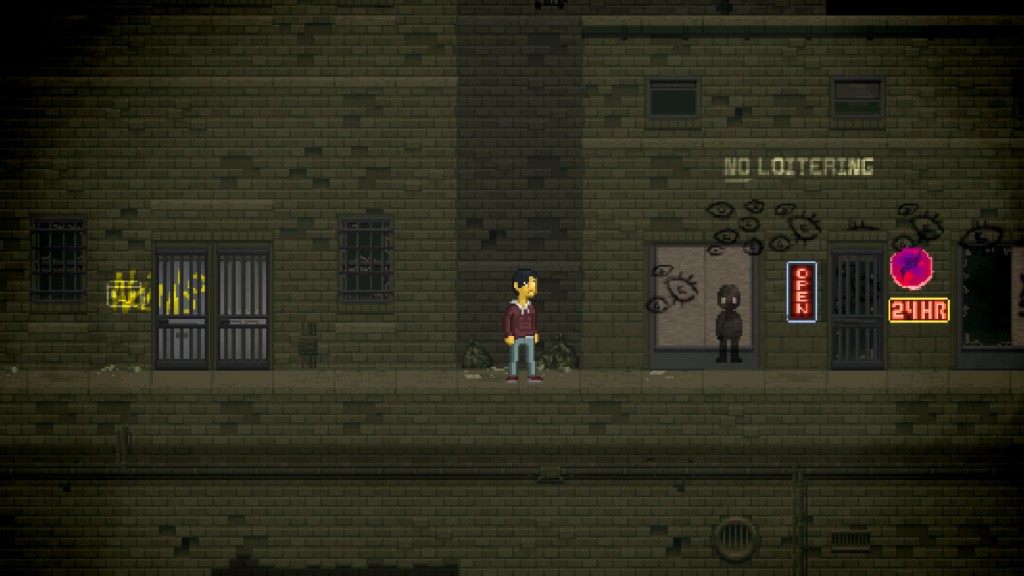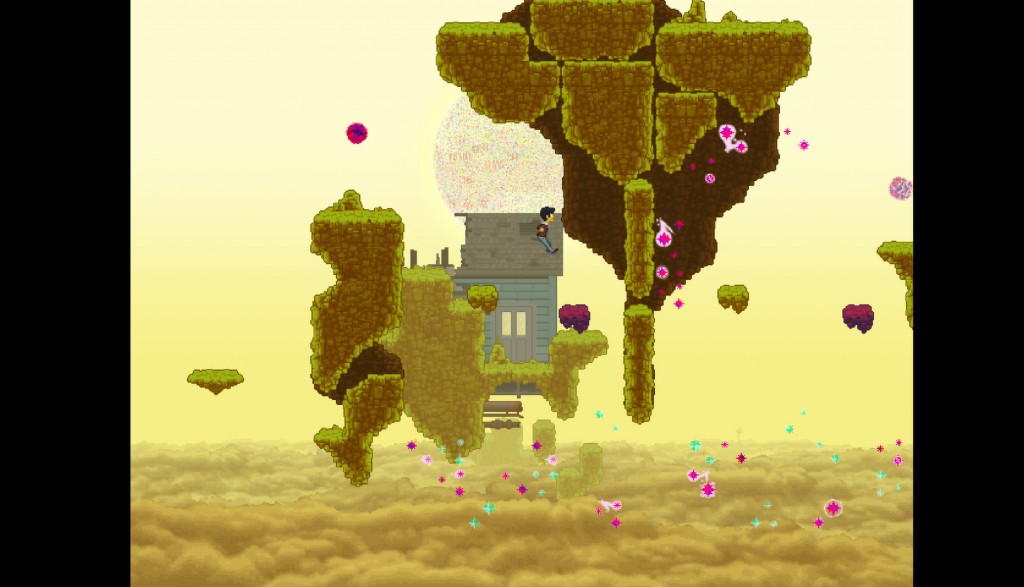Before even launching Disorder for the first time it left an impression on me. “Why is it named Disorder?” I found myself asking while looking at its store page. Of course, having since beaten the game it has a much stronger effect now. In its simplest terms, this title is a puzzle platformer. A more complex definition however paints this as an exercise in expressing depression. Throughout the journey our protagonist is weighed down by failure, family, and an overall inability to cope with reality. Without delving into the whole impetus of this it definitely stands out immediately as one of the more unique games out there.
There are zillions of indie 2D puzzle platformers out there and I personally have played a great deal of them. As such, it is often difficult to impress me in regards to visual aesthetics as so many follow in the footsteps of more famous games. Disorder does not appear to do so and manages to convey emotion with lonely, fractured levels. At other times stages seem to mirror a split between the protagonist’s emotions – focusing more on fantasy than reality. Glitchy stages are confusing and in ways that still fit with the overall theme. Making a game revolving around themes of depression is challenging but thankfully the game’s design is very evocative of the storyline. The changing landscapes are fitting overall, although it’s a shame we don’t get to see even more creativity on display.
Disorder is a puzzle platformer with a mechanic of being able to swap between two versions of the world. As you might suspect, both worlds are mostly similar but include key differences. The main difference is that certain walls and platforms will be present or absent in each version. For example, you may need to jump across two floating platforms but only exist in their specific dimension. So you’ll have to jump, press swap, and land on the newly-available platform. Trees, brick walls, and even floors might disappear or appear. There’s usually a ghostly outline of where objects will be so you’re not left guessing.
Of course, modifying platforms alone simply wouldn’t be enough. These powers also affect things like moving platforms (causing them to move or stand still), low-gravity areas, and enemies. Some enemies turn into handy jump boosts and others will start firing in a different direction. All told there’s not too many swap features you’ll come across so Disorder is uncomplex in that regard. However, this isn’t a big leap in gameplay mechanics and similar have been done better before. It’s certainly not bad, though – although a case could be made that the final section has some serious hair-pulling moments which dampen the conclusion.
There are many puzzle platformers out there, and some even covering topics of depression and mental illness. If you feel prepared to play such a game (and can handle concepts of depression, suicide, and self harm) then set aside a few hours and try out Disorder. Taking around 2 to 4 hours to finish it provides a distinct experience which meshes video game art and mechanics with emotional turmoil. One has to wonder what developer Swagabyte Games will create next after tackling such a difficult concept right off the bat.
 Disorder is the selection for the January 2014 “Not Crowdfunded, But…” series. You can read more Disorder articles here.
Disorder is the selection for the January 2014 “Not Crowdfunded, But…” series. You can read more Disorder articles here.








[…] 1/27 – Disorder Reviewed […]